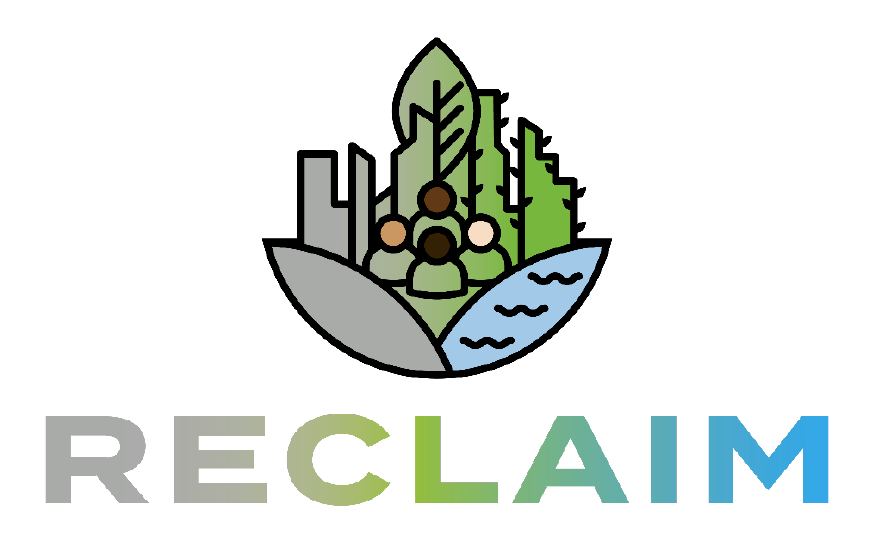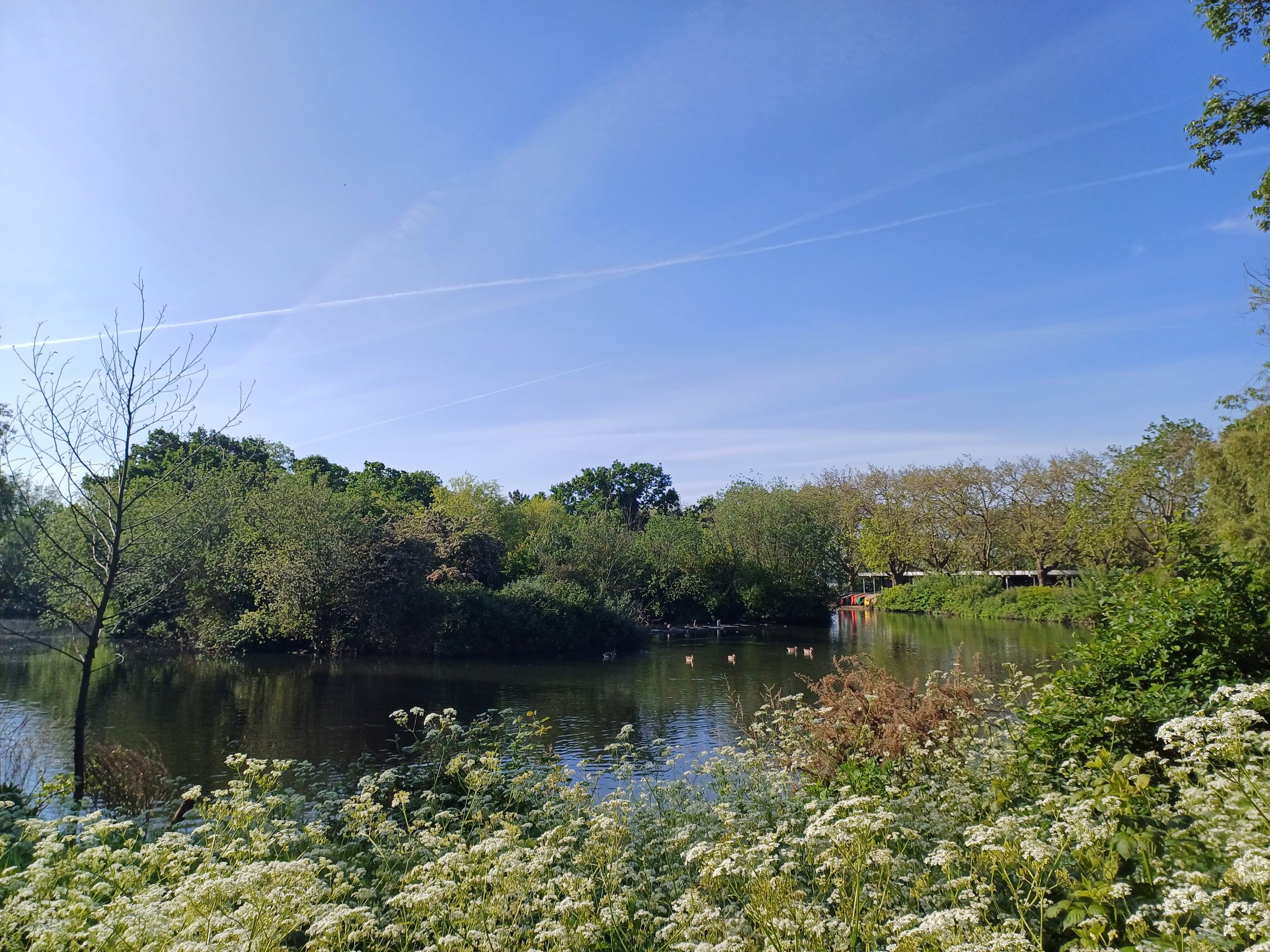
GBGI Images Competition
Image Database
The RECLAIM + network is excited to announce its Urban Green and Blue Infrastructures International Photography Awards.
Reclaiming Forgotten Cities - Turning cities from vulnerable spaces to healthy places for people (RECLAIM) is a UK Research and Innovation funded Network+ grant. The aim of the network is to build a community of practice around Urban Green and Blue Infrastructures (GBGI), to address knowledge gaps, implementation challenges, and fast-track solutions to allow cities to overcome climate and societal challenges.
Members include city officials, business and industry, NGOs and academics, and come from the UK and worldwide. It is led by the University of Surrey’s Global Centre for Clean Air Research (GCARE) in collaboration with the UK Centre for Ecology & Hydrology, Universities of Bath, Bangor and Warwick.
One of the knowledge gaps identified is the lack of images for public use that illustrate how GBGI are in practice. That is why we are launching this competition!
THEME: Urban Green and Blue and Grey? Infrastructures
Anthropogenic climate change, together with socio-political crises are highlighting the relevance of natural environments for the survival and wellbeing of people and the planet.
This is particularly visible in cities and urbanized areas, where the presence of green or blue areas is limited.
Scientists working across the natural, physical and social sciences, landscape architects and policy makers, among others, are researching the benefits of urban green and blue infrastructures (sometimes called “nature-based solutions”) in mitigating the heat island effect, noise pollution, or flooding, to help design new GBGI in urbanising areas and retrofit existing ones in consolidated cities.
However, to better understand what GBGI do, we need to know what they are made of, like the biodiversity, soil, and air they are part of. Also, it is important to know who uses them and how, and who is excluded and why. Their role in socio-cultural traditions and events. How they are valued, maintained and accessed. Or how they change over time. And we ask:
• How do GBGIs look like across the world?
• What counts as “nature” in urban settings?
• Who/what is excluded from generic (and colonial) images of nature as always green and lush?
We believe that to contribute to socio-environmental justice it is necessary to expand how natural environments (including GBGI) look like.
COMPETITION SCOPE
To create the first world-wide public image database on GBGI on Wikimedia Commons, the free media repository, to:
• Collect references of existing GBGI. For our working list of GBGI, click here.
• Move away from idealized images of nature and GBGI, focusing on ‘forgotten’ towns and cities (forgotten by funding and investment) and integrating people and everyday life, as well as deprivation, decay, pollution, etc. There is no ‘ugly’!
• Expand the aesthetics of green/blue acknowledging their changes across climates, seasons, weather, times of the day, use, their own life cycle, etc.
Make them available under creative commons so that the images can be used by designers, policy makers, schools, researchers, etc.
ELIGIBILITY CRITERIA
The competition is free and open to anyone in the world. Anyone of any age group and background is welcome to participate. Perspectives from minoritized groups are encouraged.
PRICES
There will be five awards of £400.
Awards categories:
• Best picture
• Most unique GBGI
• Forgotten cities
• Unrepresented communities
• Personal approach to ‘nature’
COMPETITION RULES
There are only a few rules for photos to participate in the contest. Every picture should be:
• Depicting an urban GBGI, which needs to be identifiable in some way. Wildlife is not the scope of this competition;
• Self-taken and self-uploaded;
• Uploaded between X 2023, 8:00AM (GMT+08:00) and 15 March 2024, 7:59AM (GMT+08:00)
• During the upload process, you give permission with a CC BY-SA license to re-use the image;
• Should have a proper title and description; Eg: SimpleCaption_01 (DogsPlayingAroundaLake_01) or LocationName_01 (PerformanceInLanePark_01);
• Should contain the following hasthags:
o #RECLAIMnetwork+
o #the name of the GBGI (See list here)
• After uploading their image/s, participants fill in a (quick) online form (HERE) where they provide their contact details and Wikimedia username, to contact them should they win an award. This data will be destroyed on April 1st 2024.
Ideally, each submission should contain a summary description of the subject in the file information, including the location of the GBGI, and relevant categories should be added to the files to enable other Commons users to find them and use them. Please take care not to violate copyright in respect of non-free creative works, and observe our educational project scope and the personality rights of identifiable people, or your files may be subject to deletion.
It is recommended that images contain at least 2 real megapixels of information. You can find more information regarding image guidelines on Commons by referring to the provided Image guidelines.
Next to that, there are a few practical rules:
• Before participating in the competition please create a Wikimedia account which is necessary to make the uploads.
• You should have an activated e-mail address on Wikimedia Commons;
• If the photo gets deleted for any reason, it is automatically disqualified from the competition;
• You are responsible for following local laws, and considering cultural and religious sensitivities around the element you will capture;
During the competition, you may upload as many pictures as you want of GBGI, but please select your best from within each series.
At the end of this process, an expert’s jury will determine the winners and runner-ups of each category. The awardee images will be displayed at RECLAIM’s webpage and exhibited at the International Conference on GBGI in London (23rd May 2024).
JUDGING CRITERIA
The jury will determine the winners of the contest by taking into consideration the following criteria (in no particular order):
• How well it describes the GBGI. It is not necessarily about overviews, but about what the infrastructure “does” or feels. However, it needs to be recognized. Close-ups are not recommended, as it might be difficult to understand the infrastructure it is depicting.
• How well it describes the GBGI in its context. Or, in other words, “in real life”.
• How it offers a ‘non-idealised’ version of ‘nature’.
• How it brings the natural, human and infrastructural together.
• Forgotten cities are prioritised.
In addition, the awards will focus on:
• Best picture. The most original, impressive, stunning picture.
• Most unique GBGI. Some GBGI are common (parks, woodlands), but others are less so (pergola, bioswale, green wall). We would like to compile images of all our working list of infrastructures, so you’re encouraged to find and depict the more unusual and/or the less “picturesque”.
• Forgotten cities. We often see images of expensive and manicured GBGI. But the reality is other. How do they look like where there is less investment? Where time has passed by?
• Under-represented communities. It is well researched that under-represented people make less use of GBGI. How do they see and/or use GBGI?
• Personal approach to ‘nature’. Natural environments are not always green, with blue skies and happy people. How can other aspects of nature be valued?
Example images below:-




